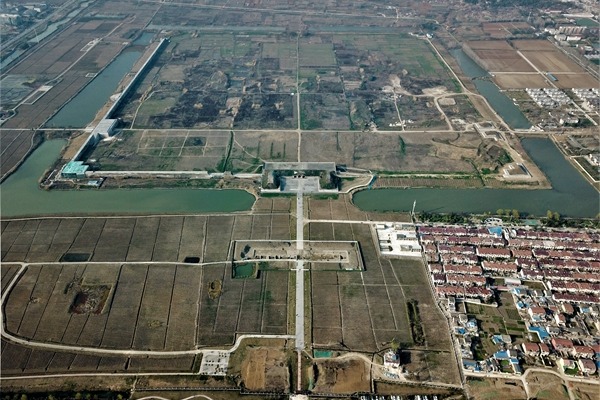
Anhui Chu Culture Museum (Shouxian County Museum)
Located at the south side of West Street, Shouchun town, Shou county, the Anhui Chu Culture Museum is the only museum in China named after "Chu Culture".

Fuyang Museum
The Fuyang Museum, established in 1958, is one of China's oldest prefecture-level comprehensive museums. In 1963, Guo Moruo – one of the leading writers of 20th-century China – wrote an inscription for Fuyang Museum.

Anqing Museum
Founded in 1978, the Anqing Museum, together with the Anhui China Huangmei Opera Museum and the Exhibition Hall of Anqing Revolutionary Cultural Relics, are three brands under one institution.

Mingzhongdu Imperial City Ruins National Archaeological Site Park
The Mingzhongdu Imperial City site is the ruins of a capital built under the orders of Zhu Yuanzhang, the founding emperor of the Ming Dynasty (1368-1644), in his hometown, now Fengyang county, Anhui province.

Bengbu Museum
No other museums in China have closer relationships with the Huai River than the Bengbu Museum. It was built in 1974 to tell stories of the local culture nourished by the Huai River through millennia. The museum's current architectural style takes its inspiration from the ancient legend in which the Sage King Yu split the mountains to stem the flood of the Huai River.

Suzhou City Museum
Suzhou City Museum holds a collection not only concentrating on the historical events of the Rebellion at Deze Township and the Battle of Gaixia more than two millennia ago but also the 500-year civilization nourished by the Sui-Tang Dynasties Grand Canal, which was built in the late sixth century.

Huaibei Museum (Museum of the Sui-Tang Dynasties Grand Canal)
The Huaibei Museum, also known as the Museum of the Sui-Tang Dynasties Grand Canal, is a cultural facility telling stories of the local history and archeological finds.

Caishiji Cultural and Ecological Tourism Area of the Yangtze River, Anhui province
Covering 3.92 square kilometers, the Caishiji Cultural and Ecological Tourism Area of the Yangtze River is home to the Caishiji Scenic Spot, Wangfu Mountain, Hebao Mountain, and the Binjiang Wetland Park.



